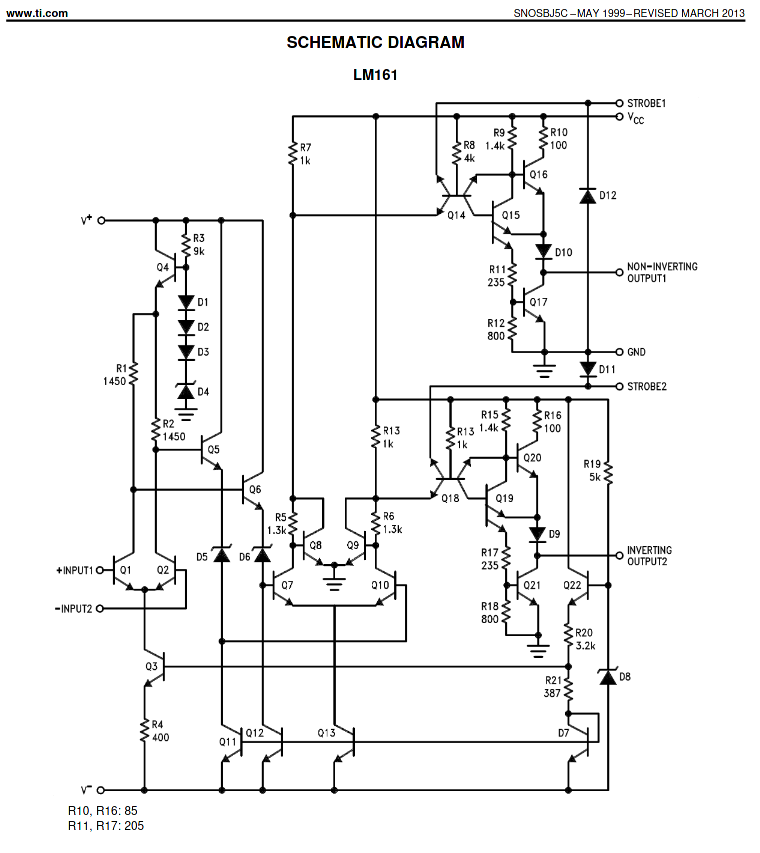You can do all sorts of nifty things when you’re designing silicon. Including this abomination.
https://en.wikipedia.org/wiki/Carcinisation
Source: datasheet for LM161, a high speed (20ns delay) moderately high voltage (30V) comparator. I’m going to try and make a discrete version of some bits of it and see how well it works. Maybe not this triple-emitter NPN though, I draw the line at components that require livestock sacrifices.



Interesting way to draw them, but not particularly weird. Bipolar processes don’t really control emitter:collector ratio very well, so gain often varies widely between two transistors even on the same IC. Having extra emitters (or extra collectors) lets the designer match the number of emitters on one transistor to the number of emitters on another, or create ratios between them. That allows for much more accurate gain matching (or gain ratio matching). There are lots of other tricks that can be done in ICs that aren’t really available in discrete components. Camenzind’s book “Designing Analog Chips” goes over quite a few of them.